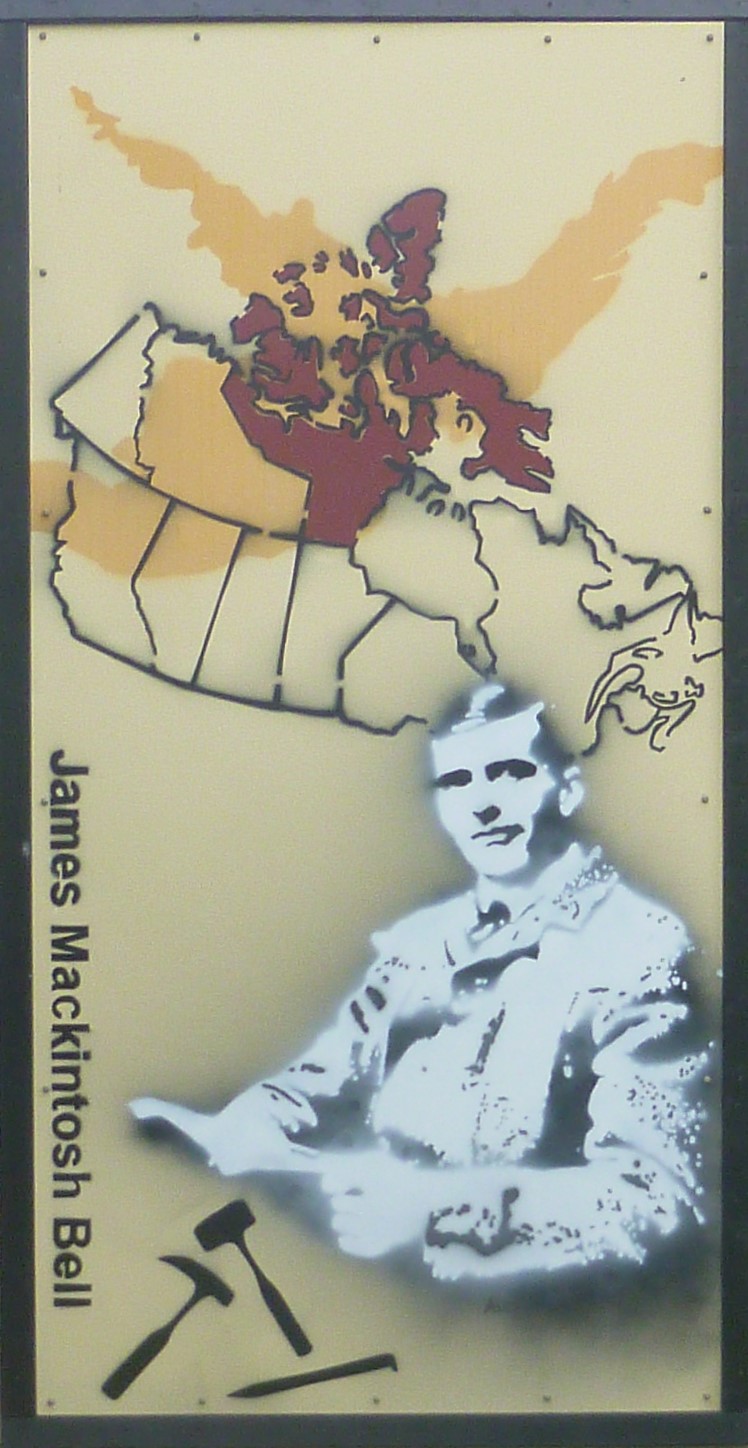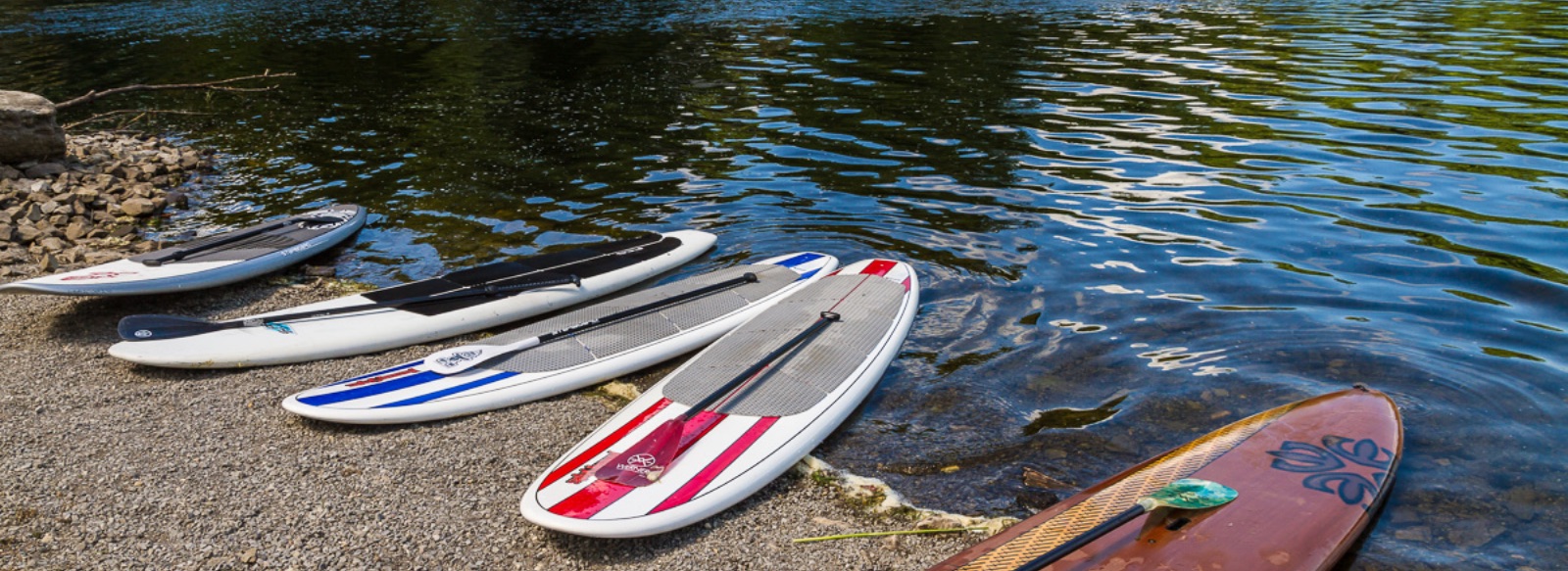Appleton Historic Features
James MacKintosh Bell Mural
 This mural is mounted on the North Lanark Regional Museum at the corner of Appleton Side Rd and River Rd.
This mural is mounted on the North Lanark Regional Museum at the corner of Appleton Side Rd and River Rd.
This mural was created by Alexander Braun in 2016. He designed and painted the mural on his own time and free of charge while attending the arts program at Notre Dame High School. He researched James Mackintosh Bell to produce the creative design and worked on the piece every day at lunch and in class, and as the school year wound down, he would stay after school to complete it. It took him several months of a painstaking process to create the piece using yellow, red, white, and black spray paint to bring his art to life and making eight stencils to capture the scene. It depicts an image of Bell surrounded by geology tools next to a large map of Canada with emphasis on Great Slave Lake, an area of great importance to Bell.
James Mackintosh Bell
While born in St. Andrew’s East, Quebec, on Sept. 23, 1877, Bell had deep ties to Lanark County and Almonte. His father, Andrew Bell, was a descendant of Rev. William Bell of Perth and his mother, Marianne Rosamond, was a member of the Rosamond woollen mill family in Almonte.
His family moved to Almonte in 1886 and he attended Almonte and District High School before venturing on to focus on geology and mining at Queens University in Kingston, eventually obtaining his doctorate in 1904 from Harvard University.
He worked as a geologist in New Zealand, Australia, New Caledonia, and Siberia over the years and returned to Almonte around 1912.
His efforts in the First World War are also well-known. He served as a captain with the 73rd Battalion Royal Highlanders of Canada, based in Montreal, and put together a platoon from the Almonte area which set sail in 1916 when he was promoted to major. The platoon was disbanded after losses in March and April of 1917 at Vimy Ridge, but Bell continued his duties, being seconded to the war office.
“Due to his knowledge of the Russian language and previous visits to Siberia he was attached to the Siberian expedition in 1918 to 1919, doing secret work for the war office in order to undermine the Russian Revolution,” Alexander stated, “For his service he was awarded the Order of the British Empire.”
After the war, Bell returned to Almonte and continued his work as a mining engineer and also authored several books including Far Places. He also became the first president of the Almonte chapter of the Great War Veterans which would eventually become the Royal Canadian Legion. Bell counted David Dunlap, founder of Hollinger International, Frederick Banting, who discovered insulin, and Group of Seven artist, A.Y. Jackson, among his friends.
He had a deep love affair with Great Slave Lake as well first visiting in 1899 with his uncle and returning often on mining expeditions. In Far Places, he wrote, “Since the summer of 1899 when I first travelled far into the Canadian northwest, I have come to regard Great Slave Lake as an old friend and as in the case of other old friends, have learned to love it. And so much so in fact, that after many years I have been lured again and again to its shores.”
His granddaughter, Patricia, said it was on one of those expeditions that he contracted pneumonia which would prove fatal. He died on March 31, 1934, and was buried with full military honours in Auld Kirk Cemetery.












